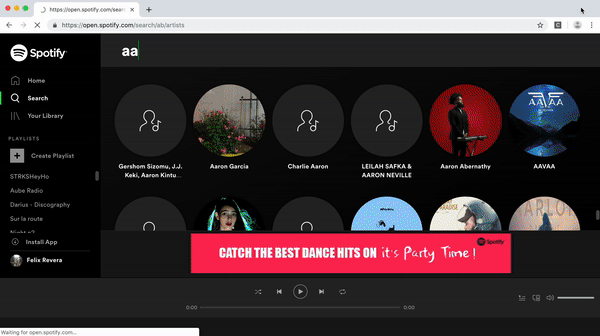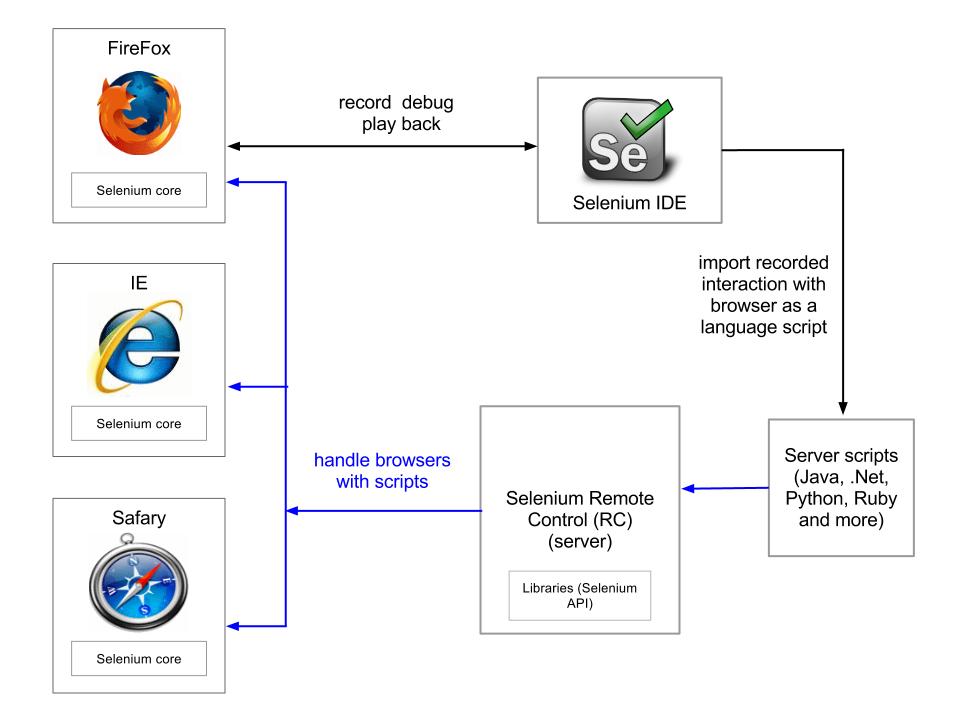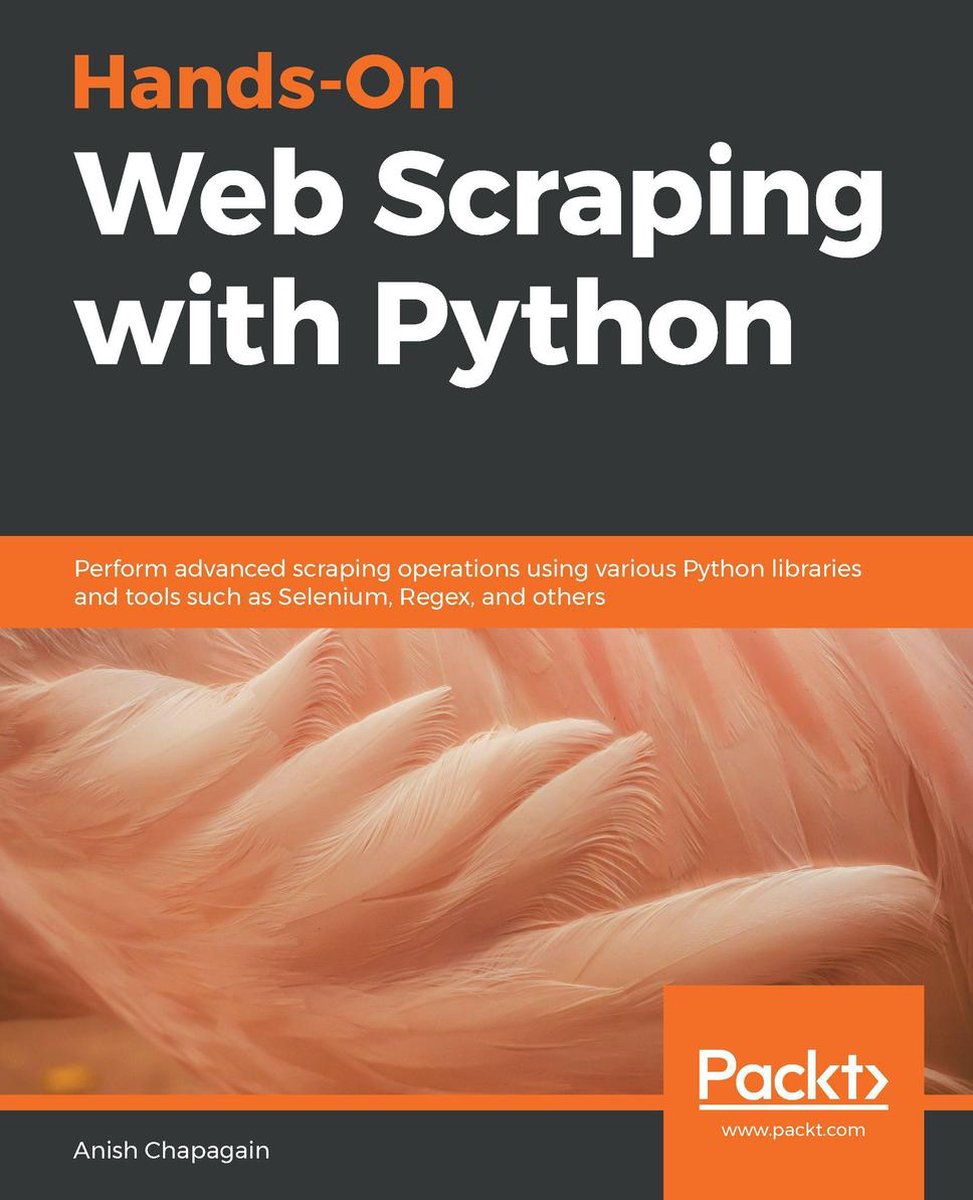Web Scrape With Selenium
- Web Scraping With Selenium Nodejs
- Web Scraping With Selenium And Beautifulsoup
- Selenium Web Scraping Python
- Scraping With Selenium
- Web Scraping With Selenium R
In the last tutorial we learned how to leverage the Scrapy framework to solve common web scraping problems.Today we are going to take a look at Selenium (with Python ❤️ ) in a step-by-step tutorial.
Selenium refers to a number of different open-source projects used for browser automation. It supports bindings for all major programming languages, including our favorite language: Python.
Pros of selenium for web scraping: Works with many programming languages. It can be used with many different browsers and platforms. Can manually record tests/small scrape operations. It is powered by a great community. Cons of selenium for web scraping: Slower than Puppeteer. It has less control over the way the scraping is done and has less. I've written a script in python in combination with selenium which is able to scrape 1000 links from a webpage in which lazy-loading method is applied for that reason it displays it's content 20 at a.
The Selenium API uses the WebDriver protocol to control a web browser, like Chrome, Firefox or Safari. The browser can run either localy or remotely.
Using Selenium is not the best method to scrap data always. It totally depends on the webpage and amount of data to be scraped. For instance, In the above example where we scrape products, Selenium is not the best method for that. Selenim Webdriver automates web browsers. The important use case of it is for autmating web applications for the testing purposes. It can also be used for web scraping. In our case, I used it for extracting all the urls corresponding to the recipes. I used selenium python bindings for using selenium web dirver.
At the beginning of the project (almost 20 years ago!) it was mostly used for cross-browser, end-to-end testing (acceptance tests).
Now it is still used for testing, but it is also used as a general browser automation platform. And of course, it us used for web scraping!
Selenium is useful when you have to perform an action on a website such as:
- Clicking on buttons
- Filling forms
- Scrolling
- Taking a screenshot
It is also useful for executing Javascript code. Let's say that you want to scrape a Single Page Application. Plus you haven't found an easy way to directly call the underlying APIs. In this case, Selenium might be what you need.
Installation
We will use Chrome in our example, so make sure you have it installed on your local machine:
seleniumpackage
To install the Selenium package, as always, I recommend that you create a virtual environment (for example using virtualenv) and then:
Quickstart
Once you have downloaded both Chrome and Chromedriver and installed the Selenium package, you should be ready to start the browser:
This will launch Chrome in headfull mode (like regular Chrome, which is controlled by your Python code).You should see a message stating that the browser is controlled by automated software.
To run Chrome in headless mode (without any graphical user interface), you can run it on a server. See the following example:
The driver.page_source will return the full page HTML code.
Here are two other interesting WebDriver properties:
driver.titlegets the page's titledriver.current_urlgets the current URL (this can be useful when there are redirections on the website and you need the final URL)
Locating Elements
Locating data on a website is one of the main use cases for Selenium, either for a test suite (making sure that a specific element is present/absent on the page) or to extract data and save it for further analysis (web scraping).

There are many methods available in the Selenium API to select elements on the page. You can use:
- Tag name
- Class name
- IDs
- XPath
- CSS selectors
We recently published an article explaining XPath. Don't hesitate to take a look if you aren't familiar with XPath.
As usual, the easiest way to locate an element is to open your Chrome dev tools and inspect the element that you need.A cool shortcut for this is to highlight the element you want with your mouse and then press Ctrl + Shift + C or on macOS Cmd + Shift + C instead of having to right click + inspect each time:
find_element
There are many ways to locate an element in selenium.Let's say that we want to locate the h1 tag in this HTML:
All these methods also have find_elements (note the plural) to return a list of elements.
For example, to get all anchors on a page, use the following:
Some elements aren't easily accessible with an ID or a simple class, and that's when you need an XPath expression. You also might have multiple elements with the same class (the ID is supposed to be unique).
XPath is my favorite way of locating elements on a web page. It's a powerful way to extract any element on a page, based on it's absolute position on the DOM, or relative to another element.
WebElement

A WebElement is a Selenium object representing an HTML element.
There are many actions that you can perform on those HTML elements, here are the most useful:

- Accessing the text of the element with the property
element.text - Clicking on the element with
element.click() - Accessing an attribute with
element.get_attribute('class') - Sending text to an input with:
element.send_keys('mypassword')
There are some other interesting methods like is_displayed(). This returns True if an element is visible to the user.
It can be interesting to avoid honeypots (like filling hidden inputs).
Honeypots are mechanisms used by website owners to detect bots. For example, if an HTML input has the attribute type=hidden like this:
This input value is supposed to be blank. If a bot is visiting a page and fills all of the inputs on a form with random value, it will also fill the hidden input. A legitimate user would never fill the hidden input value, because it is not rendered by the browser.
That's a classic honeypot.
Full example
Here is a full example using Selenium API methods we just covered.
We are going to log into Hacker News:
In our example, authenticating to Hacker News is not really useful on its own. However, you could imagine creating a bot to automatically post a link to your latest blog post.
In order to authenticate we need to:
- Go to the login page using
driver.get() - Select the username input using
driver.find_element_by_*and thenelement.send_keys()to send text to the input - Follow the same process with the password input
- Click on the login button using
element.click()
Should be easy right? Let's see the code:
Easy, right? Now there is one important thing that is missing here. How do we know if we are logged in?
Web Scraping With Selenium Nodejs

We could try a couple of things:
- Check for an error message (like “Wrong password”)
- Check for one element on the page that is only displayed once logged in.
So, we're going to check for the logout button. The logout button has the ID “logout” (easy)!
We can't just check if the element is None because all of the find_element_by_* raise an exception if the element is not found in the DOM.So we have to use a try/except block and catch the NoSuchElementException exception:
Taking a screenshot
We could easily take a screenshot using:
Note that a lot of things can go wrong when you take a screenshot with Selenium. First, you have to make sure that the window size is set correctly.Then, you need to make sure that every asynchronous HTTP call made by the frontend Javascript code has finished, and that the page is fully rendered.
In our Hacker News case it's simple and we don't have to worry about these issues.
Waiting for an element to be present
Dealing with a website that uses lots of Javascript to render its content can be tricky. These days, more and more sites are using frameworks like Angular, React and Vue.js for their front-end. These front-end frameworks are complicated to deal with because they fire a lot of AJAX calls.
If we had to worry about an asynchronous HTTP call (or many) to an API, there are two ways to solve this:
- Use a
time.sleep(ARBITRARY_TIME)before taking the screenshot. - Use a
WebDriverWaitobject.
If you use a time.sleep() you will probably use an arbitrary value. The problem is, you're either waiting for too long or not enough.Also the website can load slowly on your local wifi internet connection, but will be 10 times faster on your cloud server.With the WebDriverWait method you will wait the exact amount of time necessary for your element/data to be loaded.
This will wait five seconds for an element located by the ID “mySuperId” to be loaded.There are many other interesting expected conditions like:
element_to_be_clickabletext_to_be_present_in_elementelement_to_be_clickable
You can find more information about this in the Selenium documentation
Executing Javascript
Sometimes, you may need to execute some Javascript on the page. For example, let's say you want to take a screenshot of some information, but you first need to scroll a bit to see it.You can easily do this with Selenium:
Conclusion

I hope you enjoyed this blog post! You should now have a good understanding of how the Selenium API works in Python. If you want to know more about how to scrape the web with Python don't hesitate to take a look at our general Python web scraping guide.
Selenium is often necessary to extract data from websites using lots of Javascript. The problem is that running lots of Selenium/Headless Chrome instances at scale is hard. This is one of the things we solve with ScrapingBee, our web scraping API
Selenium is also an excellent tool to automate almost anything on the web.
If you perform repetitive tasks like filling forms or checking information behind a login form where the website doesn't have an API, it's maybe* a good idea to automate it with Selenium,just don't forget this xkcd:
In this tutorial, we will learn how to scrap web using selenium and beautiful soup. I am going to use these tools to collect recipes from a food website and store them in a structured format in a database. The two tasks involved in collecting the recipes are:
- Get all the recipe urls from the website using selenium
- Convert the html information of a recipe webpage into a structed json using beautiful soup.
For our task, I picked the NDTV food as a source for extracting recipes.
Selenium
Selenim Webdriver automates web browsers. The important use case of it is for autmating web applications for the testing purposes. It can also be used for web scraping. In our case, I used it for extracting all the urls corresponding to the recipes.
Installation
Web Scraping With Selenium And Beautifulsoup
I used selenium python bindings for using selenium web dirver. Through this python API, we can access all the functionalities of selenium web dirvers like Firefox, IE, Chrome, etc. We can use the following command for installing the selenium python API.
Selenium python API requires a web driver to interface with your choosen browser. The corresponding web drivers can be downloaded from the following links. And also make sure it is in your PATH, e.g. /usr/bin or /usr/local/bin. For more information regarding installation, please refer to the link.
| Web browser | Web driver link |
|---|---|
| Chrome | chromedriver |
| Firefox | geckodriver |
| Safari | safaridriver |
I used chromedriver to automate the google chrome web browser. The following block of code opens the website in seperate window.
Traversing the Sitemap of website
Selenium Web Scraping Python
The website that we want to scrape looks like this:
We need to collect all the group of the recipes like categories, cusine, festivals, occasion, member recipes, chefs, restaurant as shown in the above image. To do this, we will select the tab element and extract the text in it. We can find the id of the the tab and its attributes by inspect the source.In our case, id is insidetab. We can extract the tab contents and their hyper links using the following lines.
We need to follow each of these collected links and construct a link hierachy for the second level.
When you load the leaf of the above sub_category_links dictionary, you will encounter the following pages with ‘Show More’ button as shown in the below image. Selenium shines at tasks like this where we can actually click the button using element.click() method.
For the click automation, we will use the below block of code.
Now let’s get all the recipes in NDTV!
Beautiful Soup
Now that we extracted all the recipe URLs, the next task is to open these URLs and parse HTML to extract relevant information. We will use Requests python library to open the urls and excellent Beautiful Soup library to parse the opened html.
Here’s how an example recipe page looks like:
soup is the root of the parsed tree of our html page which will allow us to navigate and search elements in the tree. Let’s get the div containing the recipe and restrict our further search to this subtree.
Inspect the source page and get the class name for recipe container. In our case the recipe container class name is recp-det-cont.
Let’s start by extracting the name of the dish. get_text() extracts all the text inside the subtree.
Now let’s extract the source of the image of the dish. Inspect element reveals that img wrapped in picture inside a div of class art_imgwrap.
BeautifulSoup allows us to navigate the tree as desired.
Scraping With Selenium
Finally, ingredients and instructions are li elements contained in div of classes ingredients and method respectively. While find gets first element matching the query, find_all returns list of all matched elements.
Web Scraping With Selenium R
Overall, this project allowed me to extract 2031 recipes each with json which looks like this:
